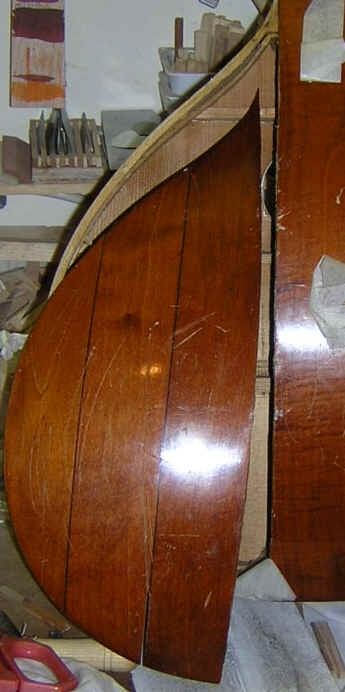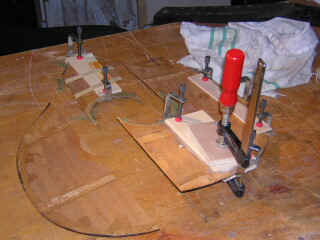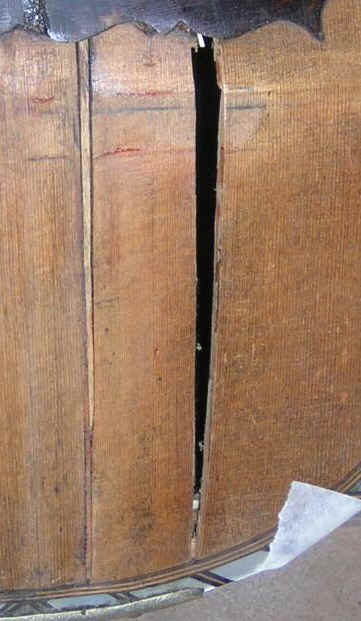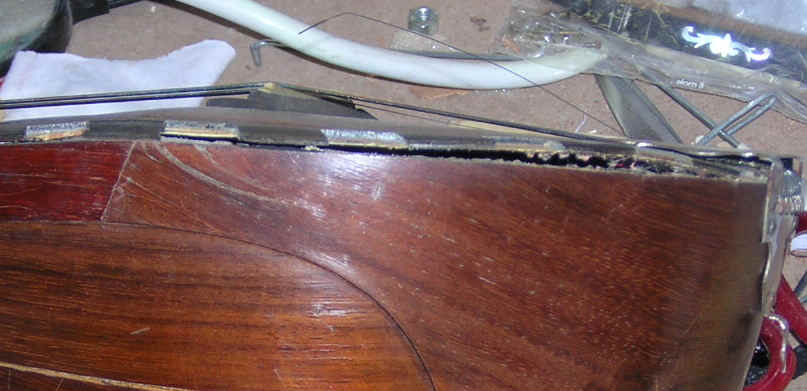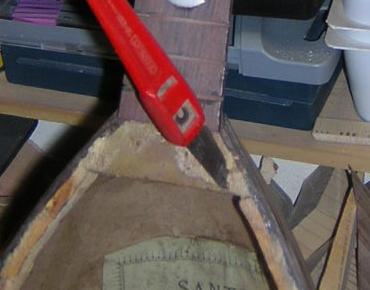|
Why are there structural problems??
There are several mandolin repair
issues that can only really be explained by looking at the structure of a
mandolin. These
include split seams; loose or split tone bars; splits in the top; back or sides;
warping of the tops around the sound-hole; bent necks; and ripped up tails.
First, a bit of background. A mandolin is
essentially a sound box, with attachments for stretching strings across it to a
certain length. It is made of wood, which is protected from the elements to some
extent by the finish. Most everything else is purely cosmetic, except where the
mandolin is climatically. These three key factors, the stretched
wire, the wood used to build
it, and where it is kept, are where most of the
structural problems originate.
|
|
Strings:
A mandolin is designed to have a scale length of between
about 325 and 355mm. Any longer and it becomes a mandola and is tuned
differently. The variety of strings that can be used to create the
range of notes played by a mandolin, is enormous. But, put the wrong
strings on the wrong instrument, and you have problems. Strings suitable
for a scale length of 325mm, are NOT the same as those suitable for one of
scale length 355mm, nor vice versa.
In order to produce the same note over a longer distance,
a string must be tightened more, so must be thicker to withstand the
increased pressure. Over-stringing is often done because players think it
increases the volume, but in many ways it puts the wood under such strain,
it is unable to vibrate properly, and the sound is deadened.
For more information on string choice, see the strings
page. |
Wood:
The other main source of problems, is the wood itself.. A
mandolin is a mobile structure; it gains and loses moisture, to a greater
or lesser extent, from changes in humidity and temperature. The finish
minimises this, but cannot eliminate it entirely. The aim is to achieve
the maximum protection with the minimum finish, to allow the wood to
vibrate freely.
These 'flexings' of the instrument cause problems, because
wood moves laterally (across the grain) much more than it does
longitudinally (along the grain). Imagine the stress for example, in the
tone bars, which will not shrink much along their length, attached to the
soundboard, which will shrink across its width. As we use wood with the grain going in different
directions, for different parts of a musical instrument, this differential rate
of shrinkage can obviously causes problems. To make matters worse, different types
of wood shrink at different rates! And if this were not enough, hard pressed
luthiers making instruments by the thousand for export, might well have
used wood insufficiently dry, so liable to future shrinking.
|
|
Humidity:
Mandolins are made with
wood, dried
to a certain level, (typically 6-8% in the US and 12-15% in Europe) in a place with
a certain humidity. Problems arise when the instrument is subjected to different
levels of temperature and humidity. Imagine going out from a warm house in
a cold winter. Eventually you get to the venue where it is again warm, and take
out the cold instrument. Inside it warms up in the warm humid atmosphere where
it will be played. That is why musicians may have to retune after only 15-20
minutes. Then of course, once the concert finishes, it all happens again in
reverse. It is to minimise these environmental
factors, that professional
musicians keep their instruments cased, often with a hydrometer and/or
humidifier in the case, as much as possible.
Modern instruments tend to fare a little
better, often being heavily varnished, though heavy varnish does tend to inhibit good vibration.
Below are some of the more typical structural problems caused by shrinkage. Many of the problems below are a direct result of
the failure to ameliorate these environmental factors.
For more information, see the care of
instrument page. |




